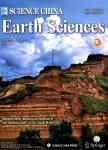Advance of research on modern soil phytolith
Advance of research on modern soil phytolith作者机构:Key Laboratory of Cenozoic Geology and Environment Institute of Geology and Geophysics Chinese Academy of Sciences Beijing 100029 China University of Chinese Academy of Sciences Beijing 100049 China Center for Excellence in Tibetan Plateau Earth Science Chinese Academy of Sciences Beijing 100101 China School of Geography Science Fujian Normal University Fuzhou 350007 China Key Laboratory of Vertebrate Evolution and Human Origins Institute of Vertebrate Paleontology and Paleoanthropology Chinese Academy of Sciences Beijing 100044 China CAS Center for Excellence in Life and Paleoenvironment Beijing 100044 China
出 版 物:《Science China Earth Sciences》 (中国科学(地球科学英文版))
年 卷 期:2018年第61卷第9期
页 面:1169-1182页
核心收录:
学科分类:070903[理学-古生物学与地层学(含:古人类学)] 0709[理学-地质学] 07[理学] 0708[理学-地球物理学] 0704[理学-天文学]
基 金:supported by the “Macroevolutionary Processes and Paleoenvironments of Major Historical Biota” of the Chinese Academy of Sciences (Grant No. XDPB0503) the National Natural Science Foundation of China (Grant Nos. 41430103 & 41230104) the National Basic Research Program of China (Grant No. 2015CB953801)
主 题:phytolith 现代土壤 Phytolith 调制解调器 植被类型 植物分类 气候条件 函数模型
摘 要:Phytolith study is a new branch of micropaleontology with an increasingly important role in geology, archaeology,and plant taxonomy. Phytoliths have several advantages considering their characteristics of small particle size, high production,wide distribution, anti-decomposition, in situ deposition, distinctive morphologies, and element sequestrating capacity. Phytolith assemblages in modern soil have been found to be closely related to modern vegetation types and climate conditions, which forms the basis for the quantitative study of paleoecology, paleoclimate, and bio-geochemical cycles. At present, phytolith studies generally focus on the following four aspects:(1) Morphology: about 260 unduplicated types of phytoliths have been identified in modern soil, of which 110 types are from grasses, 50 types from ferns, woody plants and other angiosperms,whereas the origin plants of the remaining 100 types are still under investigation.(2) Soil phytolith assemblages and vegetation:phytolith assemblages from the topsoil have been used to distinguish surface vegetation types including different forests and grasslands over a typical region. This model has been applied to restore past vegetation conditions and monitor the dynamic evolution of specific vegetation types at different temporal and spatial scales.(3) Soil phytolith assemblages and climate:quantitative and semi-quantitative relationships between phytolith assemblages and a series of climate parameters, such as annual mean temperature, annual mean precipitation and altitude, have been established through mathematical analysis. In this manner, quantitative reconstruction of paleoclimatic parameters has been achieved through the phytolith-climate transfer function model.(4) Soil phytolith and its sequestered elements: in this topic, the content of soil Phyt OC(Phytolith-occluded Organic Carbon) and the importance of Phyt OC in the bio-geochemical cycle have been the focus. The study of modern soil phytoliths has provided new approaches and many successful cases for solving specific problems in various fields, such as Earth science and archaeology. This study analyzed existing issues in addition to the abovementioned significant progresses, and provides directions for future research on modern soil phytoliths.



